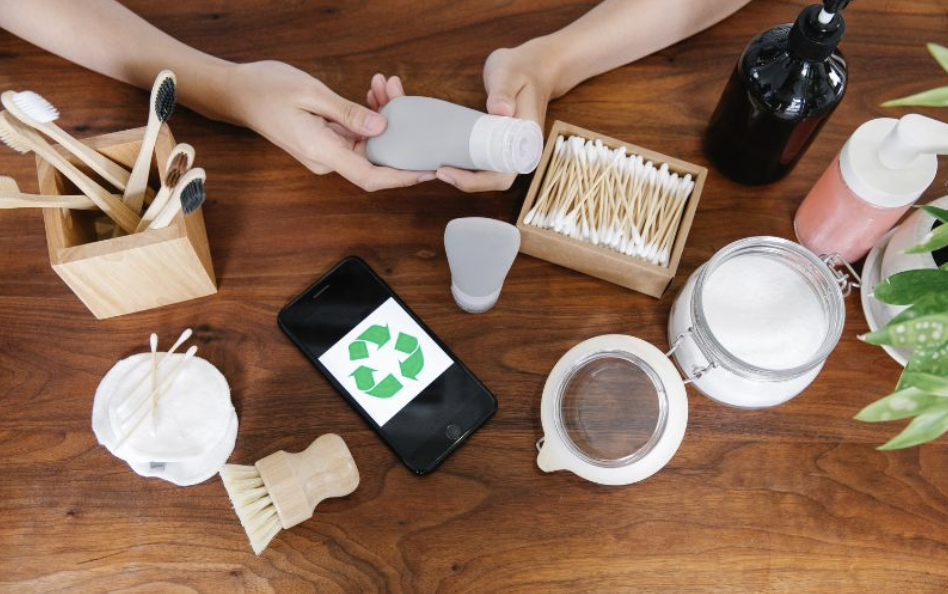By ESG Analyst Brenna McCarthy

The beauty industry generates over $100 billion in revenue worldwide, with L’Oréal being the leading beauty products company with over $40 billion in global sales. In such a growing and strong industry with a lack of regulation, challenges arise when identifying what is genuinely eco-friendly or simply greenwashed. In 2015, a poll revealed that out of the 66% of global respondents who are willing to pay more for ‘sustainable products’, more than 50% of the group made decisions based on key sustainability factors like whether a product is being made from organic ingredients or if the company is environmentally friendly. With these statistics, it is important to pay attention to where we buy from, what we buy, and if we are able to identify signs of greenwashing.
What is Greenwashing and What Does it Look like?
When a company greenwashes, they are conveying a false impression about how their products are more environmentally friendly then they really are. Creating misleading information lures consumers to choose those products thinking they are helping the planet when they are not. Greenwashing presents itself in a variety of ways ranging from an excessive use of buzzwords such as “natural” or “eco-friendly,” inclusion of green images, or the creation of vague policies.
Tips on how to identify greenwashing can be found here.
Greenwashing in the Beauty Industry
The beauty industry is largely unregulated, creating gaps between what is deemed safe or not raising the risk of greenwashing. In the US, it was only in 2022 that the Congress passed the Modernization of Cosmetics Regulation Act of 2022 (MoCRA) which extends the authority of administration over beauty and personal care products. With MoCRA, the FDA can now recall any products that are unsafe to ensure consumer health. Although the passing of the act is a step in the right direction for consumer safety, some argue that it does not directly address sustainability and that it needs to be addressed in a separate legislation.
With that in mind, let’s look at a few companies that illustrate what exactly is greenwashing within the beauty industry.
In June of 2022, L’Oréal, the leading company in the industry was accused of greenwashing claiming that their Elvive Full Restore 5 shampoo pack was ‘more sustainable,” but never mentioned what it was more sustainable compared to, nor any proof to support this claim. It featured the text “100% recycled plastic bottle.” But, small print at the back of the bottle reveals that this claim does not extend to the cap or the label.
Bondi Sands, an Australian suncare company falsely advertised their sunscreens as “reef friendly.” A report published by The Sydney Morning Herald identified ingredients that were in fact not reef friendly such as avobenzone, homosalate, octisalate and octocrylene. According to the report, Bondi Sands has “reaped millions of dollars through this fraudulent scheme based on a calculated business decision to put profits over people and the environment.”
These two examples illustrate exactly how damaging greenwashing is. Industries with little regulation such as the beauty industry makes it extremely easy for companies to take advantage of consumers. These companies are setting false standards. As consumers we should be putting our dollar into brands that are credible and honest that are setting the expectation to make a more green and resilient future. It is important to recognize that greenwashing extends into other industries as well and as we become more accustomed to greenwashing, we need to educate ourselves on a product’s origins to keep companies accountable for their actions.
References:
“It’s about Time We Discuss the Growing Problem in the Beauty Business Called “Greenwashing.”” Preview.ph, 2023, www.preview.ph/beauty/greenwashing-explainer-beauty-industry-problem-a00404-20230522. Accessed 30 Jan. 2024.
“L’Oréal, P&G and L’Occitane Accused of Greenwashing in New Findings.” Cosmeticsbusiness.com, 2022, cosmeticsbusiness.com/l-or-al-p-g-and-l-occitane-accused-of-greenwashing-in-new-findings–201904. Accessed 30 Jan. 2024.
Douglass, Rachel. “L’Oréal’s Sustainability Journey and the Challenges It Faces.” FashionUnited, FashionUnited, 2023, fashionunited.com/news/business/l-oreal-s-sustainability-journey-and-the-challenges-it-faces/2023050253656. Accessed 30 Jan. 2024.
Houston, Cameron. “Bondi Sands Faces US Class Action over Alleged “Greenwashed” Sunscreen.” The Sydney Morning Herald, The Sydney Morning Herald, 21 May 2022, www.smh.com.au/national/bondi-sands-faces-us-class-action-over-alleged-greenwashed-sunscreen-20220520-p5an5u.html. Accessed 30 Jan. 2024.
Cernansky, Rachel. “The US Beauty Industry Is Largely Unregulated. Is That Starting to Change?” Vogue Business, Vogue Business, 26 Jan. 2023, www.voguebusiness.com/sustainability/the-us-beauty-industry-is-largely-unregulated-is-that-starting-to-change. Accessed 30 Jan. 2024.
Noyes, Lydia. “A Guide to Greenwashing and How to Spot It.” EcoWatch, EcoWatch, 21 Oct. 2021, www.ecowatch.com/greenwashing-guide-2655331542.html. Accessed 30 Jan. 2024.
Howarth, Josh. “The Ultimate List of Beauty Industry Stats (2024).” Exploding Topics, Exploding Topics, 24 Jan. 2022, explodingtopics.com/blog/beauty-industry-stats. Accessed 30 Jan. 2024.
